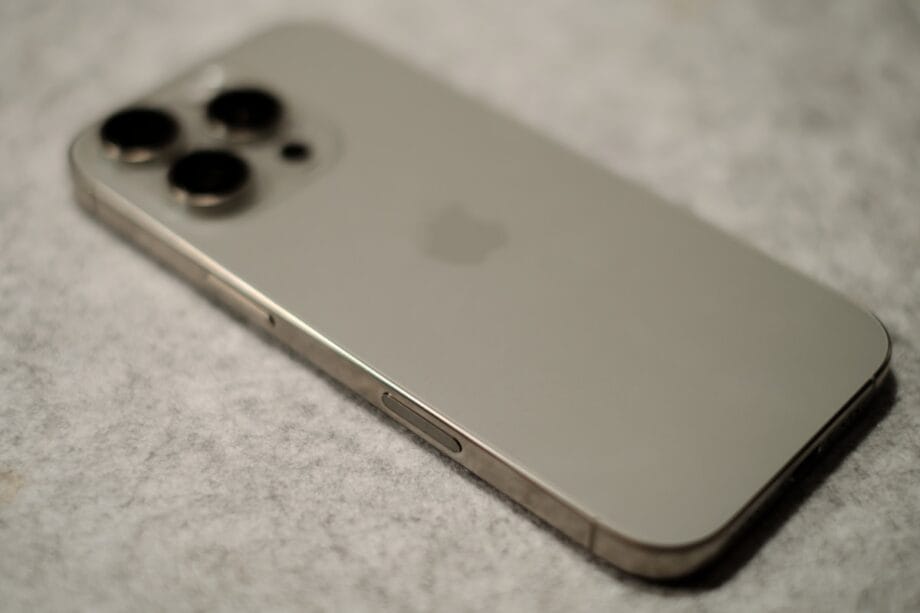Stable Pricing Enhances Shipment Objectives Despite Potential Margin Pressures on Component Suppliers
Another smartphone captures the iPhone 17 series showcased during Apple’s event in Cupertino, California, on Wednesday. (Reuters-Yonhap)
Amid rising trepidation over tariff-induced financial pressures, Apple’s unexpected choice to maintain the pricing of its newly unveiled iPhone 17 series is reigniting scrutiny regarding the earnings prospects for South Korean smartphone component manufacturers.
As reported by industry insiders on Sunday, Apple has decided to keep the entry prices of the iPhone 17 lineup largely consistent with its predecessors. This defies prior predictions of a $50 to $60 price increase attributed to tariffs imposed by the United States.
This decision is generating a blend of optimism and caution within the market. While certain analysts interpret Apple’s pricing strategy as a sign of confidence in global demand, others caution that the financial burden of price stability may trickle down to suppliers, many of whom are situated in Korea.
Prior to this announcement, market consensus leaned towards a price adjustment. This sentiment was bolstered by Apple’s projections indicating tariff-related costs would reach $800 million in the third quarter and $1.1 billion in the fourth quarter.
The iPhone 17 series debuted with a base price of $799 for the standard model, $1,099 for the Pro, and $1,199 for the Pro Max—all reflecting the 256-gigabyte configuration. Significantly, the 128GB variant has been discontinued, with the 256GB option now positioned as the entry-level choice at stable prices.
This pricing approach, introduced amidst escalating tariffs and global macroeconomic challenges, underscores Apple’s commitment to maintaining competitiveness while also signaling internal cost management strategies—dynamic elements likely to redefine conditions for Korean component suppliers.
Foxconn, Apple’s principal manufacturing ally, has reportedly adjusted its production goal for the iPhone 17 to 90 million units annually, a slight increase from the projected 89 million for the iPhone 16. A noteworthy portion of this output is anticipated to be produced in India, as part of Apple’s larger strategy to geographically diversify its supply chain.

This projected production increase is poised to send ripples through Apple’s component ecosystem, particularly benefiting South Korean firms such as LG Display and LG Innotek. LG Display is a vital supplier of low-temperature polycrystalline oxide organic light-emitting diode panels, whereas LG Innotek is recognized as a principal provider of folded zoom camera modules for premium iPhone variants.
“The disappointing earnings reported in the second quarter by Korean component manufacturers were largely the result of inflationary cost pressures and escalating global competition,” observed an analyst from a local securities firm, who requested anonymity.
“However, with Apple sustaining stable shipment volumes and enhancing advanced camera capabilities, these companies may witness improved revenue contributions as the year unfolds,” he added.
Others maintain a more tempered perspective. Han Chang-wook, executive vice president at UBI Research, remarked, “Unless further tariff measures are implemented, the pricing strategy alone is improbable to catalyze a substantial shift for Korean suppliers. Even if Apple’s sales figures rise, the ramifications for parts manufacturers might remain constrained.”
Additionally, attention is shifting towards Apple’s speculated entry into the foldable smartphone market, with some analysts forecasting a potential launch as early as next year. Such a development could pave the way for new revenue streams for specialist players within Korea’s component arena.
“Apple’s evolving hardware roadmap may prove beneficial for local firms such as Fine Technix and Innox Advanced Materials, which specialize in hinges and protective films, respectively,” asserted Cho Hyun-ji, an analyst at DB Financial Investment.
“Historically, Apple has adopted a measured approach—entering established segments with carefully refined products rather than rushing to market. The rumored iPhone Air, for instance, exemplifies Apple’s engineering focus, particularly in overcoming challenges related to battery miniaturization and thermal management—critical factors in the realm of foldable devices,” she further elaborated.
Source link: Koreaherald.com.






